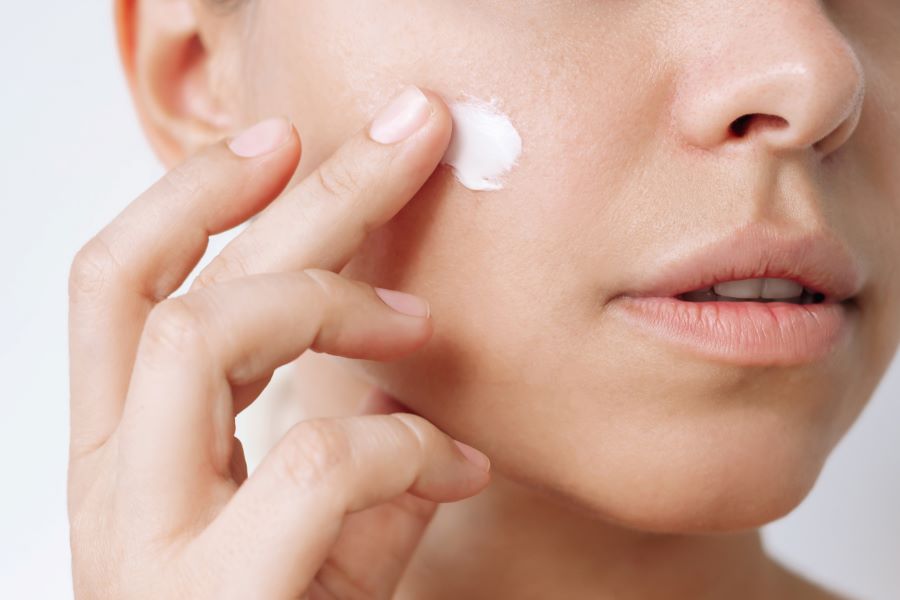Effective Ways to Reduce Dark Spots and Skin Discoloration
Discover effective ways to reduce dark spots and skin discoloration in our comprehensive guide. Explore dark spot treatments, natural remedies, and the importance of sun protection through lifestyle changes, all aimed at achieving a more even skin tone.

Dark spots, also known as hyperpigmentation, appear when certain areas of the skin produce more melanin than usual. This can create patches that are darker than the surrounding skin tone. Various factors contribute to this condition, including prolonged sun exposure, which triggers melanin production as a protective response. Hormonal fluctuations during pregnancy or from birth control can lead to melasma, a specific type of dark spot. Additionally, acne, injuries, or inflammation can leave behind post-inflammatory hyperpigmentation once the skin heals.
Understanding the root cause of your dark spots is essential before selecting a treatment approach. Some spots fade naturally over time, while others may require consistent intervention. The good news is that numerous options exist, ranging from topical treatments to professional procedures, each with varying levels of effectiveness depending on the severity and type of discoloration.
What Makes a Product Effective for Treating Dark Spots?
When searching for solutions to address facial discoloration, certain active ingredients have proven track records. Vitamin C is a powerful antioxidant that brightens skin and inhibits melanin production. Niacinamide helps reduce inflammation and evens out skin tone over time. Retinoids accelerate cell turnover, bringing fresh skin to the surface while fading existing spots. Alpha hydroxy acids like glycolic acid exfoliate the top layer of skin, revealing brighter skin beneath.
Hydroquinone, available in various concentrations, has long been used to lighten dark spots by decreasing melanin production. However, it should be used under guidance due to potential side effects with prolonged use. Kojic acid and azelaic acid offer gentler alternatives with similar brightening effects. When evaluating products, look for formulations that combine multiple active ingredients for comprehensive results.
Consistency is crucial when using topical treatments. Most products require several weeks to months of regular application before visible improvements appear. Patience and adherence to product instructions maximize effectiveness while minimizing irritation risks.
How Do Topical Creams Work on Facial Discoloration?
Topical creams designed for facial discoloration work through various mechanisms depending on their active ingredients. Some inhibit the enzyme tyrosinase, which is essential for melanin production. By blocking this enzyme, new dark spots are prevented while existing ones gradually fade. Other formulations focus on exfoliation, removing the outer layers of pigmented skin cells to reveal fresher, more evenly toned skin underneath.
Many effective creams combine multiple approaches. For example, a product might include both a melanin inhibitor and an exfoliant to address discoloration from multiple angles. Antioxidants are often added to protect skin from further damage caused by free radicals and environmental stressors.
Application technique matters as much as the product itself. Clean skin absorbs active ingredients more effectively, so always apply treatments to freshly cleansed skin. Using a small amount and spreading it evenly across affected areas prevents waste and reduces irritation risk. Following up with moisturizer and daily sunscreen is essential, as many active ingredients increase sun sensitivity.
What Professional Treatments Address Skin Pigmentation?
Beyond over-the-counter products, professional treatments offer more intensive solutions for stubborn discoloration. Chemical peels use concentrated acids to remove damaged outer layers of skin, promoting regeneration and reducing pigmentation. Different peel strengths are available, from superficial to deep, depending on the severity of discoloration.
Laser therapy targets melanin deposits with focused light energy, breaking them apart so the body can naturally eliminate them. Various laser types exist, including fractional lasers and intense pulsed light treatments, each suited to different skin types and pigmentation concerns. Microdermabrasion physically exfoliates the skin surface, improving texture and gradually reducing the appearance of dark spots.
Professional treatments typically require multiple sessions for optimal results and come with higher costs than at-home options. Consultation with a qualified dermatologist or skincare professional helps determine which treatment aligns best with your specific concerns, skin type, and budget.
Understanding Costs and Treatment Options
The financial investment required for treating dark spots varies widely based on the approach chosen. Over-the-counter creams and serums typically range from 15 to 80 dollars per product, with higher-end formulations commanding premium prices. Prescription-strength treatments may cost between 30 and 150 dollars, often requiring insurance coverage or out-of-pocket payment.
Professional treatments represent a more significant investment. Chemical peels generally cost between 100 and 300 dollars per session, with most people requiring three to six sessions. Laser treatments range from 200 to 600 dollars per session, depending on the technology used and treatment area size. Microdermabrasion sessions typically cost between 75 and 200 dollars.
| Treatment Type | Provider/Product | Cost Estimation |
|---|---|---|
| Vitamin C Serum | Various Brands | 20-60 dollars |
| Retinol Cream | Various Brands | 25-80 dollars |
| Hydroquinone Prescription | Dermatologist | 30-100 dollars |
| Chemical Peel | Dermatology Clinic | 100-300 dollars per session |
| Laser Treatment | Medical Spa/Dermatologist | 200-600 dollars per session |
| Microdermabrasion | Skincare Clinic | 75-200 dollars per session |
Prices, rates, or cost estimates mentioned in this article are based on the latest available information but may change over time. Independent research is advised before making financial decisions.
How Can You Prevent Future Dark Spots?
Prevention is often more effective and affordable than treatment. Daily sunscreen use is the single most important step in preventing new dark spots from forming. UV exposure triggers melanin production, so protecting skin with broad-spectrum SPF 30 or higher reduces this risk significantly. Reapplying sunscreen every two hours during sun exposure ensures continuous protection.
Avoiding picking or squeezing blemishes prevents post-inflammatory hyperpigmentation. When skin injuries occur, treating them gently and allowing proper healing time minimizes discoloration risk. Wearing protective clothing like wide-brimmed hats and seeking shade during peak sun hours provides additional defense.
Maintaining a consistent skincare routine with gentle products supports overall skin health. Harsh scrubs or aggressive treatments can cause inflammation, potentially leading to new dark spots. Regular exfoliation with mild products keeps skin clear without causing damage.
Dark spots and skin discoloration are common concerns with numerous effective solutions available. Whether choosing topical treatments, professional procedures, or a combination approach, understanding your options empowers you to make informed decisions. Consistency, patience, and proper sun protection form the foundation of any successful treatment plan. While results take time, most people can achieve noticeable improvement with the right strategy tailored to their individual needs and skin type.
This article is for informational purposes only and should not be considered medical advice. Please consult a qualified healthcare professional for personalized guidance and treatment.




